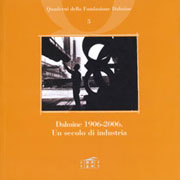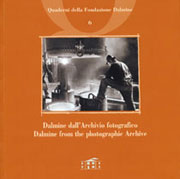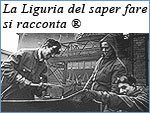Dalmine 1906-2006. Un secolo di industria, edited by Franco Amatori and Stefania Licini, Bergamo, Fondazione Dalmine (Quaderni della Fondazione Dalmine, 5), November 2006, pp. 384
Dalmine dall’Archivio fotografico. Lavoro, industria, prodotti, Bergamo, Fondazione Dalmine (Quaderni della Fondazione Dalmine, 6), November 2006, pp. 232
review by Adolfo Mignemi
|
 |
|
Enlarge text |
 |
 |
|
Introduction
Dalmine 1906-2006. Un secolo di industria
Dalmine dall’Archivio fotografico. Lavoro, industria, prodotti
Introduction
The publication of two important notebooks by the Dalmine Foundation concluded the 2006 cultural events to celebrate the centenary of the company founded by the Mannismann brothers, that gave birth to today’s Tenaris Dalmine.
The Foundation entrusted a group of scholars with the task of outlining the history of the company, starting from its fund of preserved internal documentation (preserved and valorized by the foundation since 1998), and also gathering information on the history of Dalmine from a variety of public and private archives, both in Italy and abroad.
“A history”, wrote CEO Paolo Rocca in the presentation of the first notebook, “that traces the [company’s] distant German origins with Mannesmann, then moves on to the short period in Brescia under Franchi Gregorini; through [majority share control} by Banca Commerciale Italiana, and continuing to the long period of public management with Iri and Finsider, up to the company’s privatization and current ownership by Tenaris.”
Each of the two publications illustrates a facet of this complex research project. The first notebook – which is the fifth of the series published by the Foundation and is entitled Dalmine 1906-2006. Un secolo di industria edited by Franco Amatori and Stefania Licini – explores and analyses the vicissitudes of the company, from its origins up to the present. The second notebook, entitled Dalmine dall’Archivio fotografico. Lavoro, industria, prodotti, creates an interpretive path through one of the most interesting and meaningful sections of the historical archives of the Foundation.
Dalmine 1906-2006. Un secolo di industria
 The first notebook opens with a preface by Francesco Giavazzi and a brief guideline by the editors. The first essay is a broad historical profile by Gianluigi Della Valentina, rich in “facts, figures and protagonists”, that covers the entire history of the company. Claudia Rossi follows with essays dedicated to the reading of some of the main balance indexes of the last one hundred years. Ruggero Ranieri and Giorgio Pedrocco respectively examine the themes of market and technology as well as the organization of labor.
The first notebook opens with a preface by Francesco Giavazzi and a brief guideline by the editors. The first essay is a broad historical profile by Gianluigi Della Valentina, rich in “facts, figures and protagonists”, that covers the entire history of the company. Claudia Rossi follows with essays dedicated to the reading of some of the main balance indexes of the last one hundred years. Ruggero Ranieri and Giorgio Pedrocco respectively examine the themes of market and technology as well as the organization of labor.
The next section of the volume is dedicated to the protagonists of the company: workers, technicians, managers and entrepreneurs, analyzed in two essays by Ferruccio Ricciardi and Silvia Conca. Then, Cinzia Martignone, with an essay entitled Company town e politiche sociali nella comunicazione aziendale, discusses the company’s efforts to shape its surrounding community. This contribution is followed by Andrea Colli’s analysis of internationalization processes. The volume concludes with a note on the sources for Dalmine’s history by Angelo Bendotti, Carolina Lussana and Eugenia Valtulina, and with a large appendix that aims to give a clear picture of the economic-financial and productive variables of the company, the evolution of its human resources, a sequential list of the administrators from 1906 to 2006 and lastly, a short company chronology.
As the final essay points out, all the contributions “derive from (and contribute to enlarge upon) information from a heritage of research, studies and graduation theses” that were carried out beginning in the 1970s. This fact confirms Dalmine as “an outstanding case for the preservation of the memory of an enterprise and of the records that document its history in its broadest sense. The technical, economic and entrepreneurial vicissitudes of the company also comprise part of the history of Italy’s industrialization and economic development; its social and territorial transformations; of the formation and transformation of managers and the working class. It is the story of thousands of people who connected their activity to the company. And it is also the story of a settlement, a company town that owes its origins and part of its enlargement, at least until the 1950s, to the direct initiatives of the company. The evidence of these stories is collected in various places, so that we can speak of a “diffused archives”.
It’s important to emphasize the amplitude of both the sources and the archives that were consulted in in order to document each of the essays. They are: The IRI archives preserved in the Central State Archives; the fonds Agostino and Roberto Rocca in the Archivio Histórico Techint; the fond Sofindit of Banca Intesa historical archives, heritage Banca Commerciale Italiana; the archives Franchi Gregorini in the Ansaldo Foundation; the archives Agostino Rocca in the Luigi Einaudi Foundation; the Iri Archives in the Iri Foundation; the archives of the Dalmine factory council and the audio archives in the Istituto Bergamasco per la Storia della Resistenza e dell’Età Contemporanea; the fond Mannesmann in the Mannesmann Archives; the fond Dalmine Safta in the Techint Buenos Aires.
Dalmine dall’Archivio fotografico. Lavoro, industria, prodotti
 The creation of the second notebook was no less complex. In a certain sense, it is an illustrated window of the ups and downs of the company for an international readership with a bilingual text.
The creation of the second notebook was no less complex. In a certain sense, it is an illustrated window of the ups and downs of the company for an international readership with a bilingual text.
The introduction states: “To retrace one century of work, industry, and activity through the images preserved in the Historical Archives of the Foundation seemed the most immediate and suitable form to properly underline this significant moment”.
The volume is divided between a large selection of images, compiled by the photographer Maurizio Buscarino, and an interpretative essay written by the media historian Peppino Ortoleva.
“While looking through—not always systematically--through the 15 thousand photographs of the Foundation“ Buscarino says, “I observed the company’s growth in terms of a strong link with the social and historical context […]. I looked not only for the images of the technical evolution of the company, the work and the product, but also for the most significant examples of their relationship with their ‘historical future’ considering that “the photographs themselves also belong to history as physical artifacts, because they express a technical and cultural evolution that make the oldest photographs extremely different from those produced today.”
The interesting sequence of 152 images, carefully reproduced, is followed by a precise analysis of 12 of them by Ortoleva who favors the historical-formal and esthetical register, creating a complex dialogue between the reader and the ‘path’ defined by the photographs chosen by Buscarino. The excellence of the result, however, is also its greatest limitation.
The time is right to pause on this issue because it poses a problem of method that should be faced. The longstanding experience of Dalmine’s photographic archives seems surely the most suitable context to express without misunderstanding, some reflections about its wideness and its articulation.
The reader of the notebook is faced with beautiful illustrations and photographs that are organized into a true visual text, yet lacking the support of a historical documentary archives. The selection could have been accomplished using materials of heterogeneous origins, without compromising the volume’s aims of representative and analytical hypothesis.
The authors choose to approach the image of Dalmine without describing how this image was first created and then built up over a century. As a result, they miss the opportunity of putting the reader into contact with the historical photographic archives itself.
In recent years, the celebrative corporate monographs have become increasingly repetitive in terms of images from internal photographic archives. However, these archives are treated in the same way as record archives –as if there were a community of organization and a community of production (which there has never been). So it appears to be freely taken for granted that the reader is able to accurately contextualize every cited record.
In fact, this is not so. Images are eloquent, but they should be questioned correctly in order to avoid being matched to an overly general—and therefore, inconclusive—account.
What should we expect from a historical account that has grown out of a photographic archives? The first step should be the presentation of the archives and its history, the history of its fonds and of its series; with some interpretation where there are evident gaps. This suggestion doesn’t stem from an archival mania nor from an excess of erudition, but simply for an explanation of the sources. If a commercial letter, the minutes of a board of directors’ meeting or a ledger always requires its provenance in a file, a record series or an inventory, then the same should apply to a photograph that seldom clearly defines its context. This lack easily leads to improbable connections.
Once the substance and the characteristics of the archives are outlined, so that the images are contextualized and therefore not confined to their formal-esthetic dimension, we would expect that each chosen photograph is traced back to its place as an irreplaceable part of a coherent documentary whole. Showing the origin of an image, and its belonging to a sequence, gives back the productive context of a work– because every photograph is also a corporate work, even if done by an external party (the photographer) -, the understanding of its complexity is immediate since it shows the ‘how’ and ‘why’ an image was captured.
To a certain extent, I am sure that this procedure is necessary to better understand the ‘logic’ of any anthology.
From the interpretative point of view, we would expect that in some way the problem of perspective is considered --beginning with the inevitable question: how can we look today at the image of yesterday? There is a strong need to reconstruct the origin of production of an image. Who photographed it? For what purpose? What are the features of this photographer’s other work? In the meanwhile, we need to make an effort to define the qualitative and connotative aspects.
This means that editors and authors of this type of book attempts to provide all the technical background of the images, fully aware that such information is not redundant, nor a pointless extra, but rather the equivalent of the notations that specify, on the one hand, the productive process that created the images and, on the other hand, its use.
And only at this point I believe it is possible to offer, with due attention, a reflection on the objects that were chosen. In the case of a productive and corporate experience, they are: the production, its techniques and its organization, the work and its tasks, and in the characteristics of its performance (hard work, competence and so on), the industrial product, the external and internal corporate image and its policies (industrial relations, assistance policies) and so on.
We are sure that sooner or later we will be able to leaf through a visual path like this edited by a corporate photographer. That’s why we keep on considering those realities where the photographic documentation has been receiving specific attention, for a long time: relevant by now in the field of preservation but less active in the field of valorization and usage of the images as a documented source.
Dalmine’s photographic archives stand as a candidate for this role having already taken a first step in this direction. The occasion of the printing of this notebook, with the range of issues it suggests, is a demonstration of it.
The role of photography in historiographic writings is not a simple one and, surely, in comparison with the documentary sources, is less consolidated. It is necessary to read critically and to share the experience of all the steps taken up to now.

